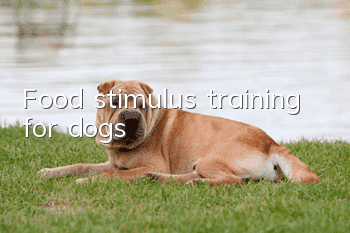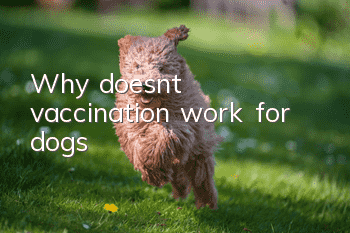Food stimulus training for dogs

When training dogs, many friends simply understand food stimulation as food reward. In fact, this is incomplete and inaccurate. So-called food stimulation. It is the total stimulation of the dog's nervous system by using things that can satisfy hunger (the dog's favorite food) and using means such as rewards, induction and prohibition to cause the dog's nervous system to produce corresponding unconditioned reflexes and conditioned reflexes during dog training. Specifically, food stimulation mainly plays the following three aspects in dog training;
1. Food rewards
Food rewards. It is the owner who is training the dog. It is a means of using the biological characteristics of the dog's unconditioned reflex of food to strengthen the dog's correct actions due to conditioned stimulation. It mainly uses food to directly act on the dog's mouth, causing unconditioned reflexes such as chewing and swallowing. To achieve the purpose of rewarding the dog and accelerating the establishment of the dog's conditioned reflex, for example, when training the dog to "sit", the owner uses mechanical stimulation such as lifting the collar and pressing the waist corner while giving the "sit" command. Even if the dog does not understand the sit command at the time, but is forced to sit down by the owner, the owner will immediately reward the dog with a compound when it sits down to strengthen the dog's response to the owner's "sit" command and mechanical stimulation. the correct action taken. Due to the repeated use of verbal commands, mechanical stimulation, and food rewards during training, the dog quickly formed a conditioned reflex to the "sit" command. When using food rewards, first, attention should be paid to increasing the intensity of the dog's excitement for the food reflex. Generally, It is more suitable to use when hungry before meals. For adult dogs, feeding restrictions can also be used to increase the dog's desire for food. The reward food should be as small as possible and has good palatability. Second, attention should be paid to mechanical stimulation. Organically combined with timely and accurate food rewards, the dog can not only maintain the excitement for training, which is conducive to the establishment of conditioned reflexes, but also ensures the standardization and accuracy of training actions; third, it should be used in conjunction with the "good" command , so that the dog can form a conditioned reflex to the "good" command, and play the same rewarding role as food, so as to gradually reduce or cancel food rewards in later training (when conditions are complicated); fourth, blind abuse of food rewards should be prevented, It is necessary to distinguish between different trainings and treat them separately to avoid negative connections caused by improper use. For example, excessive use of food rewards during fetch training will often cause the dog to develop the bad habit of spitting out items and other rewards in advance without waiting for the handler's command.
2. Food induction
Food induction is a means for the owner to use the dog's conditioned reflex to food during dog training, and use the smell and shape of food to induce the dog to make corresponding actions at a certain distance. Food induction is generally used in conjunction with mechanical stimulation in the early stages of establishing conditioned reflexes in dogs. For example, when training a dog to come to the left side, the dog will often become inhibited because the owner uses too many mechanical stimulations such as pulling ropes and collars. Some cannot come and return quickly (or even fear) according to the master's commands and gestures. At this time, the owner uses food induction methods to induce the dog to come forward and massage on the left side, which often has a good effect on eliminating the dog's inhibition of subjects and the formation of conditioned reflexes.. When using food to induce, the owner should pay attention to teasing the dog. Under normal circumstances, he should put the food in his hand and let the dog see or smell it first. When the dog has the desire to eat, he should then induce him to make corresponding actions. Under the induction of food, most dogs are in a state of active tendencies, which generally appear to be lively and natural, and are easy to form conditioned reflexes. Tan is also restricted by certain environments and conditions, and sometimes its movements are not standard and accurate. Therefore, it should usually be used in conjunction with mechanical stimulation.
IV. Food Prohibitions
Food prohibition is a method in which the owner uses inducement combined with mechanical stimulation during dog training to make the dog inhibit food under certain conditions. For example, when the owner is correcting the dog's bad behavior of picking up food everywhere, he intentionally places food on the roadside. When the dog passes by, when the dog finds the food and is about to open its mouth to eat, the trainer immediately gives the command "no" and pulls hard with the leash. Or whip the dog's body to stop the dog's bad behavior of picking up food everywhere. In anti-feeding training, the training assistant holds food for the dog to eat. If the dog shows a desire to eat, severe mechanical stimulation is immediately given to the dog to inhibit the food given by the training assistant, thereby enhancing the dog's appetite for strangers. Hostility, thereby achieving the effect of refusing to eat. Food prohibition is a special form of food stimulation. When using, attention should be paid to combining mechanical stimulation with the 'no' command. Even after the dog has formed a conditioned reflex to the command, mechanical stimulation should still be combined continuously to avoid fading. You must be good at observing the dog's expression and promptly discover that the dog is picking up food anywhere or greedily eating food given by strangers, and give severe physical stimulation to the dog when it first exhibits bad behavior (the intensity of stimulation should be treated separately according to the characteristics of the dog). Once the dog's behavior When the behavior is stopped, the owner should immediately give a petting reward (do not use food rewards) to ease the dog's nervous state.
Food stimulation is the most commonly used training method by owners in dog training, and it is also one of the most common training methods. Its reflex activity on the dog's nervous system shows both the attributes of unconditioned stimulation and the attributes of conditioned stimulation. It can produce both excitatory stimulation and inhibitory stimulation. Correct use of food stimulation can help enhance the dog's attachment to its owner, relieve the dog's passive defense state caused by mechanical stimulation, and accelerate the establishment of the dog's conditioned reflex. If used improperly, not only will the training effect not be good, but it will also cause some bad relationships with the dog.
In summary, it is not difficult to find that food stimulation plays the role of reward, induction and prohibition in training.
- What causes soft stool in dogs?
- The dog fell into a coma after being vaccinated!
- What is the personality of the Chigu Tibetan Mastiff? Is it easy to raise? How much does a Tibetan Mastiff cost?
- How much does a Tosa dog cost_Why don’t you dare to keep a Tosa dog?
- What should I do if my puppy keeps barking when I first get home? A must-read for novice dog trainers!
- Does walking a dog in Alaska require a leash? Things to note when walking an Alaskan dog!
- Why do dogs regurgitate their cud?
- How to make Labrador's hair shiny?
- How long can a Corgi take a bath to repel insects?
- What should I do if my dog’s testicles are rotten?



